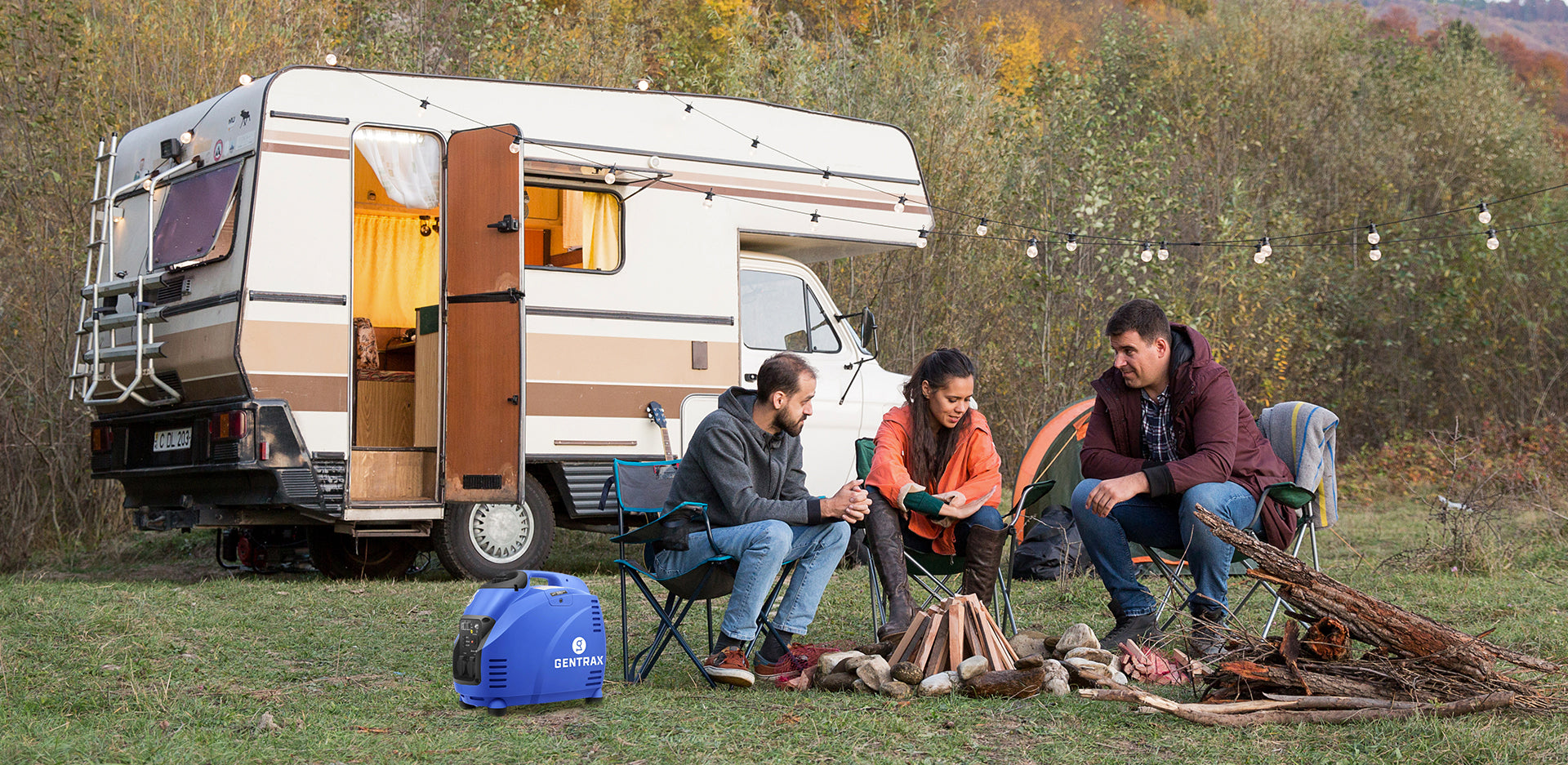The serenity of a remote campsite can quickly turn frustrating when you're left without power for essential devices, from keeping food fresh in a portable fridge to charging cameras that capture precious memories. With over 90% of caravan and camping trips happening in regional areas across Australia, having reliable power has become as essential as a good tent or sleeping bag. This comprehensive guide will help you choose the right portable generator for your outdoor adventures, cutting through technical jargon to focus on what really matters. You'll learn about different types of portable power solutions, understand key features to look for, and discover how to match a generator to your specific needs, whether you're planning a weekend camping trip or embarking on long-term caravanning across the outback.
First Things First: What Type of Portable Power Do You Need
The term "portable generator" has evolved significantly beyond traditional petrol models, now encompassing a range of power solutions designed for different outdoor scenarios. Understanding the two main categories—inverter generators and portable power stations—forms the foundation for making an informed choice that aligns with your camping style and power requirements.
Traditional Inverter Generators Explained
An inverter generator is a fuel-powered unit that typically runs on petrol, producing clean and stable electricity through pure sine wave output, making it safe for sensitive electronics whilst delivering substantial power for demanding appliances. These units excel at providing high power output capable of running everything from coffee machines to air conditioners, with the ability to refuel instantly for continuous operation during extended trips. Modern inverter generators incorporate intelligent features like eco-mode, which automatically adjusts engine speed based on power demand, significantly improving fuel efficiency and reducing noise levels during low-power usage. Popular models like the Gentrax 2.5kW available at Outbax demonstrate the perfect balance between power output and portability, offering enough capacity for most camping needs whilst remaining manageable for transport.
Here’s what one of our customers said:
"Purchased this generator for camping and backup at home early November. Received within 3 days and after following the instructions for initial setup, filling it with oil and a couple of pulls away it went, let it run for a few hours before adding some load which I have now done and I am impressed. Not much louder than my mates 3 x the price Honda. This generator is value for money. Totally recommend."
Modern Portable Power Stations: A Quieter Choice
A portable power station represents the evolution of camping power, consisting of a large rechargeable battery unit—often using advanced LiFePO4 technology for exceptional longevity and safety—that operates in complete silence with zero emissions. These innovative units are ideal for enclosed spaces like tents or vans where traditional generators would pose safety concerns, whilst their lightweight design and ability to recharge via solar panels make them perfect for eco-conscious adventurers.
The silent operation and clean power output make portable battery generators particularly suited for powering sensitive electronics, including laptops, drones, camera equipment, and mobile phones, without the risk of power surges or interference. Options like the VoltX Portable Power Station showcase how modern battery technology can deliver reliable power for tech-heavy campers who prioritise quiet operation and environmental responsibility.
Key Differences: A Quick Comparison
When comparing inverter generators and portable power stations, several fundamental differences emerge that directly impact their suitability for various camping scenarios. Inverter generators excel at powering heavy appliances and offer unlimited run time through refuelling, producing a low hum that's acceptable in most camping environments, while portable electric generators (power stations) operate silently, perfect for electronics and light loads, though they require recharging when depleted. The choice between petrol power with its instant refuelling capability and battery/solar options with their emission-free operation often depends on your camping location, duration, and the types of devices you need to power.
Must-Know Features When Buying a Portable Power Source
Selecting the right portable generator requires understanding essential technical features and how they translate to real-world camping applications, empowering you to make a decision that matches both your power needs and adventure style.
Power Output: How Many Watts Do You Really Need
Understanding watts (W) and kilowatts (kW) becomes straightforward when you consider that running watts indicate continuous power capability, while starting watts account for the initial surge required by motor-driven appliances. Calculating your power needs involves listing common camping items and their typical consumption: LED lights (10-20W), phone chargers (10-15W), portable fridges (40-80W), small kettles (800-1200W), and laptops (50-100W), then adding these together to determine your minimum requirement. It's advisable to choose a generator with approximately 20-30% higher wattage than your calculated needs to avoid overloading and ensure efficient operation, particularly when multiple devices run simultaneously.
Noise Level: Why a Quiet Generator Matters for Camping
Noise consideration becomes critical in shared campsites and national parks where excessive sound can disturb wildlife and fellow campers, with many locations enforcing strict noise regulations. Understanding decibels helps put noise levels in perspective—quiet fuel-efficient portable generators for outdoor use typically operate around 55-65 dBA, comparable to normal conversation, while traditional open-frame models can exceed 75 dBA. Inverter generators and power stations from Outbax significantly reduce noise pollution compared to conventional models, with many featuring sound-dampening technology and eco-modes that further minimise acoustic output during partial load operation.
Here’s what one of our customers said:
“Recently purchased the Gentrax GTX4200 Pro Inverter Generator. It’s quieter than I expected. Easy to manoeuvre around with wheels and pull out handles. It came with a cover.”
Weight and Portability: Your Guide to Easy Transport
The importance of size and weight varies dramatically between car camping scenarios, where you can manage heavier units and situations requiring you to carry equipment short distances from your vehicle. Small generators in the 1-2kW range typically weigh between 15-25kg, manageable for most adults, while larger 3-4kW models can exceed 40kg, often requiring built-in wheels and telescopic handles for practical transport. Features enhancing portability include ergonomic carry handles, compact designs that maximise power-to-weight ratios, and modular components that allow for easier storage in limited vehicle space.
Fuel Type and Efficiency: Petrol vs Dual Fuel Options
Petrol remains the most common fuel choice due to widespread availability across Australia, though dual fuel models offering petrol/LPG flexibility provide advantages, including cleaner combustion and potentially lower running costs. Eco-mode functionality deserves special attention as it automatically throttles the engine based on load demand, potentially doubling run time whilst reducing noise—a crucial feature when quiet operation and fuel conservation matter. Understanding run time specifications, typically measured at 25%, 50%, or 100% load, helps you plan fuel requirements for extended trips, with efficient models offering up to 8-10 hours at half load on a single tank.
Essential Outlets and Connections
Modern portable generators must accommodate diverse charging needs, requiring a combination of standard 240V AC sockets for traditional appliances, USB-A and USB-C ports for contemporary devices, and 12V DC outlets for camping accessories. The inclusion of parallel capability allows you to link two smaller units for doubled power output when needed, providing flexibility without committing to a permanently larger generator. Solar portable generators and power stations often feature additional input options for solar panel charging, enabling sustainable power generation during extended stays in sunny locations.
Matching a Generator to Your Adventure Style
Weekend camping trips with basic power needs suit compact 1-2kW inverter generators or 500-1000Wh power stations, providing sufficient capacity for lighting, device charging, and small appliances without excessive weight or complexity. Family caravanning adventures demand more substantial 2.5-3.5kW generators capable of running air conditioning, microwaves, and multiple appliances simultaneously, with Outbax offering models specifically designed for RV compatibility. Remote work camping, increasingly popular amongst digital nomads, requires ultra-quiet operation and clean power for sensitive electronics, making high-capacity power stations with solar charging capability the ideal choice. Four-wheel driving expeditions benefit from rugged, compact generators with excellent power-to-weight ratios, while festival camping often suits portable power stations that comply with event noise restrictions and safety requirements.
Making Your Final Decision
Choosing the right portable generator ultimately depends on balancing your specific power requirements, camping style, and budget considerations, while prioritising features that enhance your outdoor experience. Quality brands available through Outbax undergo rigorous testing for Australian conditions, ensuring reliability when you're far from civilisation and dependent on consistent power. Consider future camping plans when selecting capacity, as investing in slightly more power than currently needed provides flexibility for evolving adventure styles and growing equipment collections.


